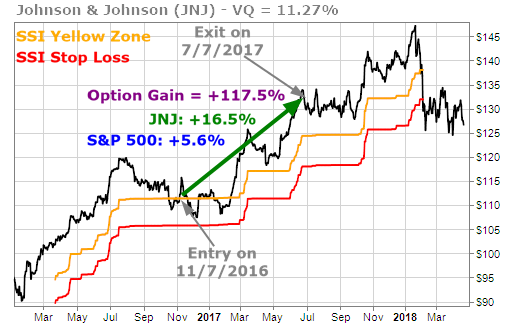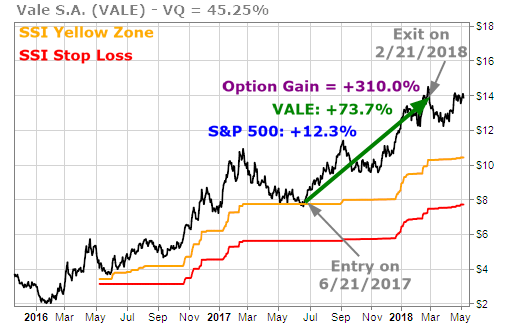For the past two weeks, I’ve focused on the “Low Risk Runner” strategies. These articles are available here and here.
The idea behind the “Low Risk Runners” is simple and powerful: These are stocks that have moved from the Stock State Indicator (SSI) Yellow Zone back into the SSI Green Zone.
As I have mentioned before, there are two advantages of investing in a stock when it moves from the SSI Yellow Zone back into the SSI Green Zone.
- A stock in the SSI Yellow Zone is still within its normal range of volatility
- A stock in the SSI Yellow Zone only has half the downside risk compared to a stock that has just entered the SSI Green Zone for the first time
These are called Low Risk Runner stocks because they have the potential to move considerably higher while taking a smaller amount of risk than normal.
Last week I showed you that buying a stock after it moves back into the SSI Green Zone and then selling that stock eight months later is a very profitable strategy. Out of the almost 1,000 stocks we used for testing, this strategy has a win rate of 66%, and the winners outperform the losers by 1.5–1.
I thought about this… 66% winners and the winners outperform by 50%. What if we applied this same idea to the options world? My team did the research, and the results are terrific.
To use this strategy with options, we’ll still exit the trade at the end of eight months, so we want to get into an options contract that is at least 10 months to expiration. Often, this means we’ll be buying Long-Term Equity Anticipation Securities (LEAPS) that are 18 months or longer until they expire. Also, the average gain on the Low Risk Runner stocks for eight months is approximately 1 VQ (Volatility Quotient). That means they increase in price by one unit of their normal volatility.
Here are two examples. This was the chart we presented for Johnson & Johnson (JNJ) last week. Using the Low Risk Runner strategy, we were able to capture a 16.5% gain in just eight months. That beat the S&P 500 by an almost 3-1 margin.


Here’s an example of using the strategy with a high-risk stock. Vale S.A. (VALE) is a Brazilian iron-ore company. Its current VQ is 45.3%, which puts it in the category of high risk.
After triggering an SSI Entry signal in May 2016, VALE moved strongly higher for the next year before falling briefly into the SSI Yellow Zone and moving back into the Green Zone in June 2017.
With the price of VALE at $8.10, we decided to buy the January 2019 call with a $10 strike price for $1. We sold the call eight months later at a price of $4.10 for a gain of 310%.






